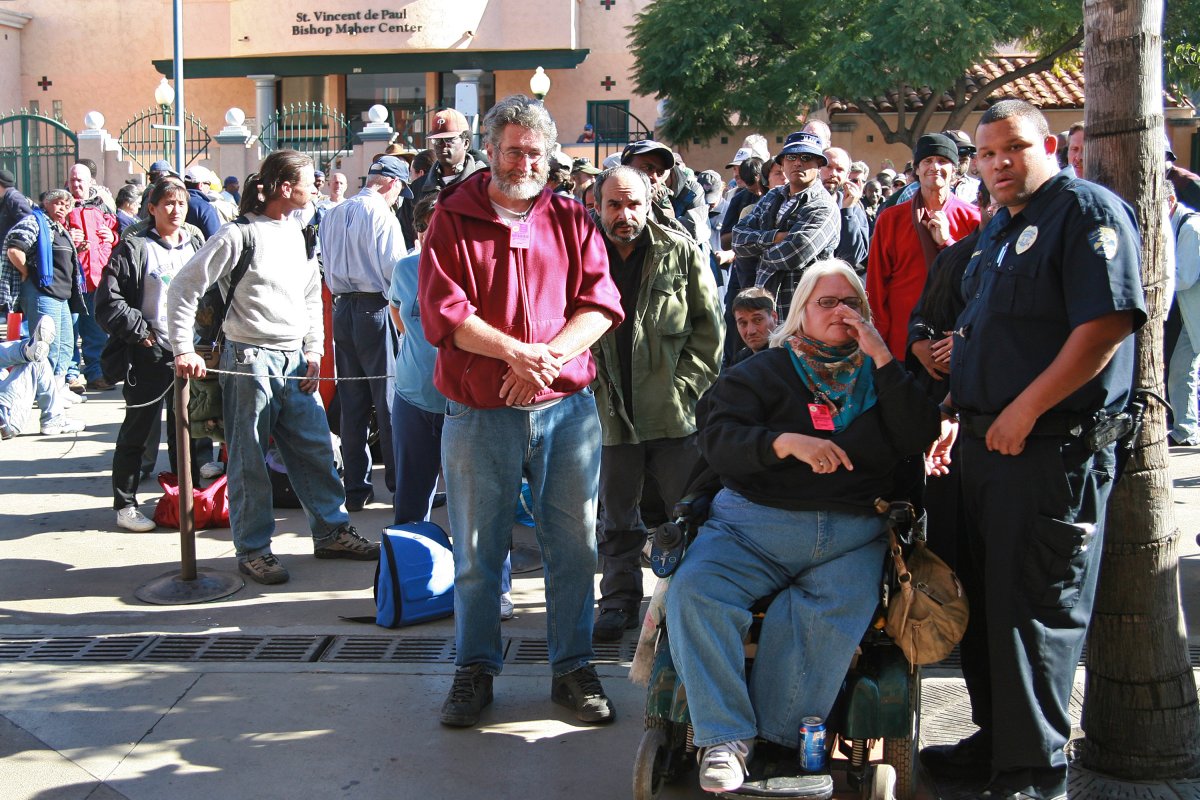Cases of hepatitis A in San Diego, Calif., have raised from 461 to 481, the county Health and Human Services Agency informed Tuesday. Starting in November 2016, the outbreak has led to 337 hospitalizations and 17 deaths. If urgent action is not taken, hepatitis A could spread to more states in the U.S. The highly contagious virus has already arrived in Arizona.
All of those deaths caused by the outbreak have occurred due to underlying medical conditions like liver disease and autoimmune disorders. Most of the fatal victims were homeless or drug addicts. However, 33 percent of infected people are not members of those populations, meaning that the hepatitis A virus affects individuals beyond their socioeconomic boundaries.
Symptoms include yellowed skin and the whites of the eyes – known as jaundice –, as well as nausea, vomiting, fatigue, abdominal pain and diarrhea.

More boots on the ground
Although only nurses and doctors are allowed to give the hepatitis A vaccine, Dr. Kristi Koenig, head of the San Diego County Emergency Medical Service, confirmed Wednesday that the state had temporarily authorized paramedics to help vaccinate at-risk populations in special events under the supervision of nurses, the Los Angeles Times reported.
“Paramedics already have basic skills in terms of delivering injections, and this approval allows us to give them extra training to do vaccination but only in very specific settings with very specific oversight,” Koenig said, as quoted by the San Diego Union-Tribune.
That confirmed the positive response to an emergency request San Diego authorities had filled Sept. 20. Such emergency programs have benefited about 54,000 people in the county, according to a report by Food Safety News. The paramedics are now allowed to help vaccinate homeless residents, drug addicts, and liver disease patients or those with vulnerable immune systems.
Assemblyman Todd Gloria, D-San Diego, said paramedics are used to be in contact with at-risk populations and are more likely to get them to accept the vaccine, according to the San Diego Union-Tribune. A former city council member, he added that extra workers would help prevent the outbreak from spreading “any more than it already has.”
Efforts to eradicate the virus
The hepatitis A virus is spread when a person accidentally comes in contact with infected human feces, which is why experts strongly recommend hand-washing with soap and warm water for 20 seconds after using the bathroom. Alcohol-based hand sanitizer might not kill the virus.

Authorities working to eliminate the virus have cleaned human waste from encampments where homeless people sleep and from the streets in their most frequented areas. Assistant Chief Operating Officer Stacey LoMedico on Wednesday told the San Diego City Council’s Public Safety and Livable Neighborhoods Committee that these measures would need to be taken even after the end of the outbreak.
Other actions likely to be continued include increased the availability of restrooms and hand-washing facilities to ensure proper hygiene.
Study reveals that the San Diego outbreak has spread to other California areas
The annual scientific conference of the Infectious Diseases Society of America called “IDWeek” is taking place at the San Diego Convention Center, where experts from across the country are sharing their most recent findings.
Sally Ann Iverson, a CDC epidemic intelligence officer, on Thursday held a presentation about a study titled “Hepatitis A Outbreak among Persons Experiencing Homelessness – Maricopa County, Arizona, 2017”.
The research revealed that the Arizona outbreak was originated from a person who had arrived in the state from San Diego. The study authors used molecular and epidemiologic data to determine the source of the epidemic and found that its strain has been brewing for months beyond the Southern California city.
They reached this conclusion after discovering that three samples from patients in Arizona were “molecularly identical to samples from patients in San Diego,” as reported by Food Safety News.
But conference participants have also shared some good news. Dr. Eric McDonald, head of the county’s Epidemiology and Immunization Services Branch, said Wednesday the vaccination campaign had raised the number of administered doses from 42,000 to 54,000 within a week, as reported by the San Diego Union-Tribune.

Hepatitis A cases in Sacramento
After an employee of a restaurant at the Haggis Oaks Golf Course was confirmed infected, Sacramento authorities on Tuesday urged new patrons to talk to their doctors about taking the post-exposure hepatitis vaccination.
Sacramento officials don’t know how the employee became infected, but they confirmed this person handled food at Mackenzie’s Sports Bar and Grille. This information led the county’s Health Officer Olivia Kasirve to urge people who ate or drank at the restaurant from Sept. 12 through Sept. 22 to immediately ask their doctors about taking the post-exposure vaccine.
After exposure to the hepatitis A virus, the vaccine can only be effective within two weeks. Because the incubation time for this illness in people is 15 to 50 days, those who miss the opportunity for the post-exposure vaccination are advised to watch for symptoms in the next few weeks, according to the Centers for Disease Control and Prevention.
Source: San Diego Union-Tribune
